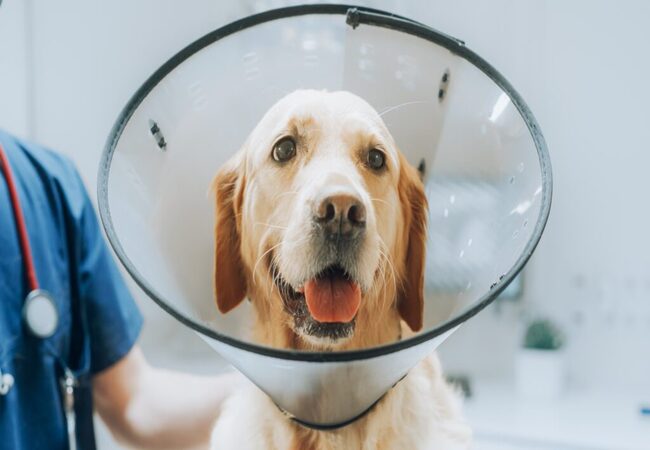🐾 Dog Neutering 2025: Veterinary Guide by Dr Duncan Houston BVSc 🩺

In this article
🐾 Dog Neutering 2025: Veterinary Guide by Dr Duncan Houston BVSc 🩺
Hello! I’m Dr Duncan Houston BVSc, veterinarian and founder of Ask A Vet. Neutering (castration) is a common surgery that removes a male dog’s testicles. In 2025, the procedure is safer, its benefits well-known, and timing more tailored to breed and lifestyle. This comprehensive guide provides everything from procedure details and recovery to behavior and health considerations, supported by the Ask A Vet telehealth platform, Woopf product bundles, and Purrz tracking tools. Let’s explore how to make the best choice for your furry friend. 🐶✨
1. 🌀 What Is Neutering (Castration)?
Neutering involves surgical removal of both testicles via a small incision above the scrotum, under general anesthesia. The procedure takes about 20–60 minutes depending on size and health :contentReference[oaicite:2]{index=2}. Vets use specialized monitoring to keep dogs stable during surgery via IV catheters, anesthetic gas, oxygen, warming blankets, and vital sign monitors :contentReference[oaicite:3]{index=3}.
2. 🩺 Why Neuter Your Dog?
2.1 Prevent Reproduction & Aid Shelter Efforts
- Neutering stops unwanted litters and helps combat overpopulation—reducing euthanasia in shelters :contentReference[oaicite:4]{index=4}.
2.2 Health Benefits
- Removes risk of testicular cancer entirely and reduces benign prostate enlargement :contentReference[oaicite:5]{index=5}.
- May lower risk of reproductive diseases (e.g. prostatomegaly) :contentReference[oaicite:6]{index=6}.
2.3 Behavior Improvements
- Reduces urine marking, roaming, mounting, and some forms of aggression :contentReference[oaicite:7]{index=7}.
3. 🛡️ Risks & Considerations
- Surgical/anesthesia complications: rare but possible—risk around 0.05–0.1% for healthy dogs :contentReference[oaicite:8]{index=8}.
- Increased obesity risk: metabolic changes post-neutering may lead to weight gain :contentReference[oaicite:9]{index=9}.
- Orthopedic and cancer risks: early neutering in large breeds has been linked with higher rates of hip dysplasia, cruciate tears, osteosarcoma, and hemangiosarcoma :contentReference[oaicite:10]{index=10}.
- Prostate cancer: neutered dogs have a higher risk despite reduced benign enlargement :contentReference[oaicite:11]{index=11}.
- Potential behavior changes: some dogs may show increased fear, anxiety, or noise reactivity after neutering :contentReference[oaicite:12]{index=12}.
4. 🕓 Timing Matters
- General guideline: 6–9 months of age is common for small breeds; 11–14 months preferred for large/giant breeds to reduce orthopedic/cancer risks :contentReference[oaicite:13]{index=13}.
- Pediatric neuter: Some shelters offer at 6–14 weeks—supported by AVMA for population control but individual risk should be assessed :contentReference[oaicite:14]{index=14}.
- Discuss breed and lifestyle with your vet to decide optimal timing :contentReference[oaicite:15]{index=15}.
5. 🏥 What to Expect on Surgery Day
- Pre-op check: Veterinary exam and blood tests to screen health :contentReference[oaicite:16]{index=16}.
- Fasting: Usually no food after midnight; water often allowed :contentReference[oaicite:17]{index=17}.
- Anaesthesia set-up: IV line, monitoring, warming measures :contentReference[oaicite:18]{index=18}.
- Surgery steps: skin clipped, incision made, testicles tied and removed, incision closed (sometimes with tissue glue) :contentReference[oaicite:19]{index=19}.
- Recovery: Dogs monitored until awake and stable before discharge with instructions. Usually discharged same or next day :contentReference[oaicite:20]{index=20}.
6. 🏡 Post‑Op Care & Recovery
- Activity restriction: 10–14 days of limited movement to promote healing :contentReference[oaicite:21]{index=21}.
- Incision protection: Use an E‑collar and check daily for redness, swelling, or discharge :contentReference[oaicite:22]{index=22}.
- Pain management: Prescribed NSAIDs or opioids as appropriate :contentReference[oaicite:23]{index=23}.
- Monitor behavior: Watch for licking, appetite, vomiting, or lethargy; contact vet if concerns arise :contentReference[oaicite:24]{index=24}.
- Diet and weight: Adjust food intake and encourage light exercise post-recovery :contentReference[oaicite:25]{index=25}.
- Follow-up: Check wound at 10–14 days; stitch removal if needed :contentReference[oaicite:26]{index=26}.
7. 🎭 Behavioral Effects & Expectations
- Good outcomes: Many dogs show reduced roaming, marking, mounting; calmer demeanor :contentReference[oaicite:27]{index=27}.
- Possible negatives: A subset may experience increased fearfulness, anxiety, or noise sensitivity—monitor and support post‑op :contentReference[oaicite:28]{index=28}.
8. 🧭 The Role of Ask A Vet, Woopf & Purrz
- Ask A Vet: Telehealth consultations for pre-surgery planning, post-op check-ins, wound care advice, weight/behavior concerns.
- Woopf: Provides E-collars, gentle food formulas for neutered dogs, weight management recipes, calming enrichment items.
- Purrz: Helps schedule surgery dates, medicine reminders, incision photo logs, and long-term wellness notes.
9. 🧾 Final Thoughts 📝
Neutering is a safe and effective way to prevent reproduction, reduce certain behavior issues, and avoid reproductive cancers. However, timing and individual factors—especially breed and size—are key. Careful planning, pain management, and structured aftercare ensure a smooth recovery. With tools like Ask A Vet telemedicine, Woopf product support, and Purrz tracking, pet parents can feel confident every step of the way. Discuss with your vet the optimal timing and aftercare plan for your dog’s unique needs. A well-informed choice leads to a healthier, happier life for your canine companion! 🐾💙
Need advice on timing, surgery prep, or recovery? Visit AskAVet.com, explore neuter‑care kits via Woopf, and track healing in Purrz. Together, we'll support your best friend all day, every step of the way. 🌟


